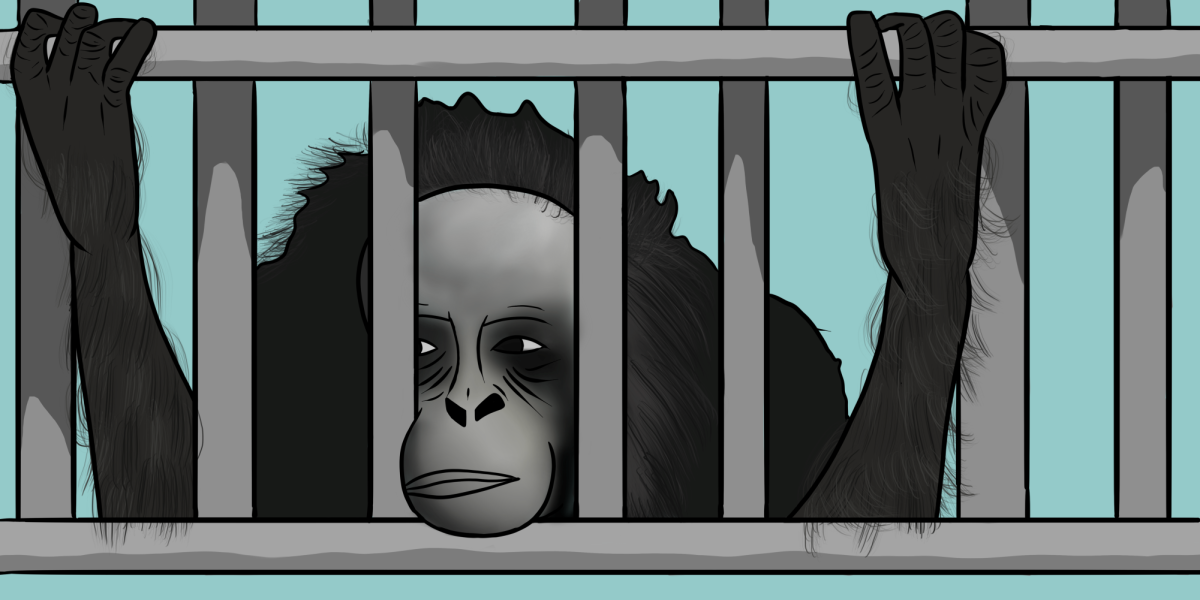You’ve probably taken a class field trip to a local zoo, gazed in amazement at the marine life at the Miami Seaquarium and driven to Seaworld to spend your day at the park, without realizing you were donating your money to harming the animals you paid to see.
According to the Animal Rights Defense Association, zoos have been proven to impart detrimental effects to the animals who forcibly live there. The consequences include but are not limited to: eating disorders, self-mutilation, abnormal sexual and maternal behaviors, diseases pertaining to skin, respiratory, cardiovascular, and digestive behavior, permanent stress and the inability to properly develop.
Many zoos and aquariums say they are aiding in animal conservation, and many attendees fall victim to the false claim. According to National Geographic, of the 212 zoos and aquariums in the United States that claim to be conservations, less than 3 percent of their budget goes to conservation efforts.
While real animal conservations do exist, they are few and far between. A 2018 analysis of the Association of Zoos and Aquariums showed that only 7 percent of zoos and aquariums are classified as qualifying for the title of “biodiversity conservation.” According to PETA, most animals confined in zoos and aquariums are not endangered, nor are they being prepared for release into natural habitats.
The vast majority of “breeding initiatives” put in place create a surplus of animals, which are all held in captivity and used, evidence of the fact that these places value their economic gain more than any animal species or life.
According to Born Free USA, the mortality rate is sky-high when it comes to marine life, like dolphins and whales. This can be attributed to the fact that many tanks lack proper substrate (the material from which an organism obtains its nourishment), environmental enrichment or contain species that are often incompatible tankmates. Moreover, the tanks are often miserably small – marine life usually swim up to 140 miles and dive almost 1,000 feet every day in the wild; however, they are confined to 170-foot-long and 8 to 34-foot deep tanks while in captivity.
Despite this, Seaworld received over 22 million visitors just in 2022. According to Seaworld of Hurt, Seaworld’s animals are constantly subjected to sexual abuse,. Moreover, after an investigation launched by PETA, many animals were found with open wounds and extensive scarring on their bodies.
Still, instead of continuing to read and write about these shameful acts, we can take action against these ethically criminal institutions.
Spreading awareness is essential, and even more effective having been properly educated on the issues surrounding captivity and animal welfare.
Reading articles and books such as “Zooicide” and “Mistreatment of Killer Whales at Seaworld,” along with watching documentaries like “Blackfish” and “Zoochosis” are a start and the more we know, the more information we can spread.
Informing peers, family and friends may not seem like doing much, but that information can travel and more people will be exposed to the truth, a factor that can be the motivation behind an individual choosing not to visit a zoo, aquarium or a park like Seaworld. Instead, we can choose to participate in sustainable tourism; choosing wildlife experiences that focus on observing animals in their natural habitat, with no human interference.
In South Florida, establishments like the Flamingo Gardens, Pelican Harbor Seabird Station and Monkey Jungle all give visitors a chance to view wildlife in their own habitats, offering tours that take a closer look at animals in their home environment. If you want to get directly involved with aiding wildlife, places like the South Florida Wilidlife Center and Wilidlife Rescue of Dade County offer volunteer opportunities, with the former having an age requirement of at least 16 years.


